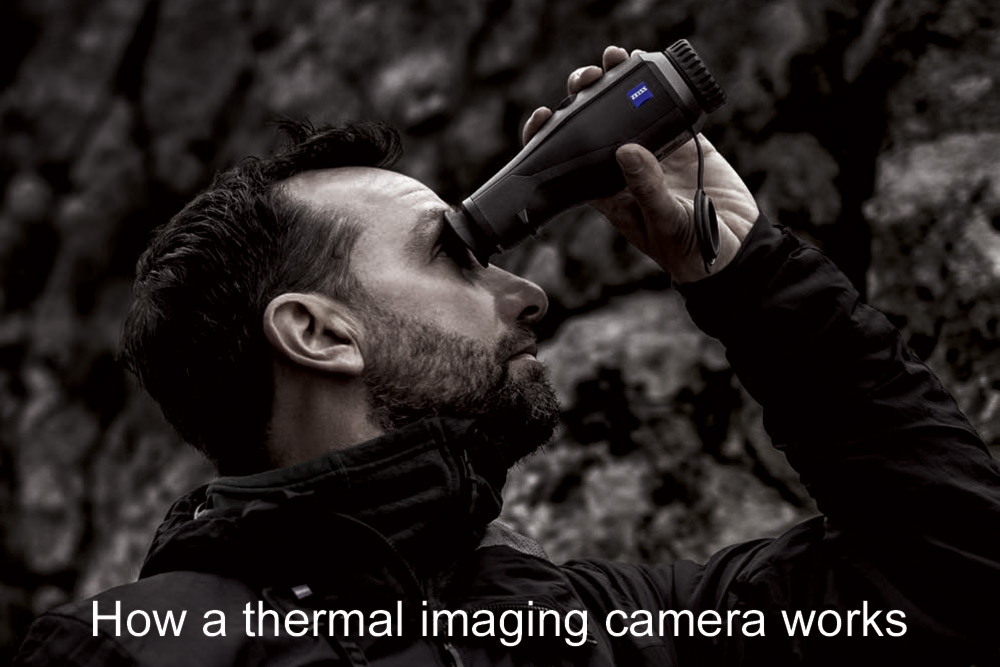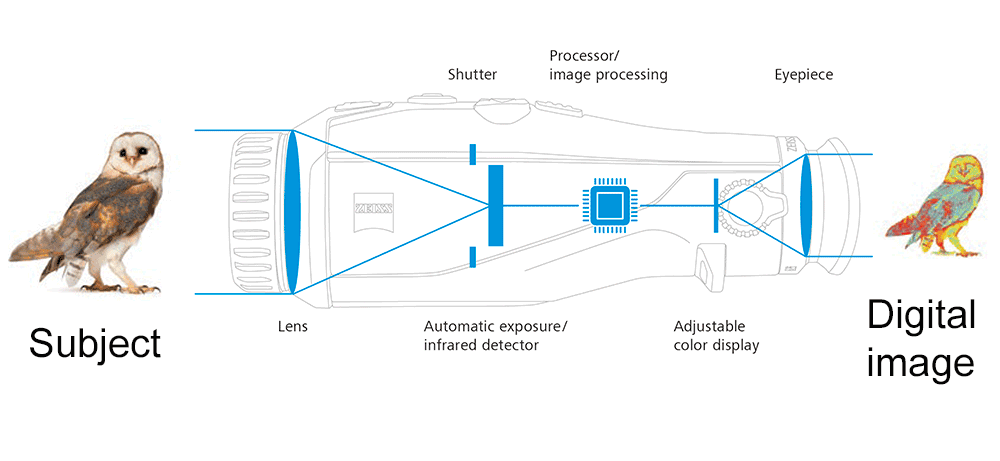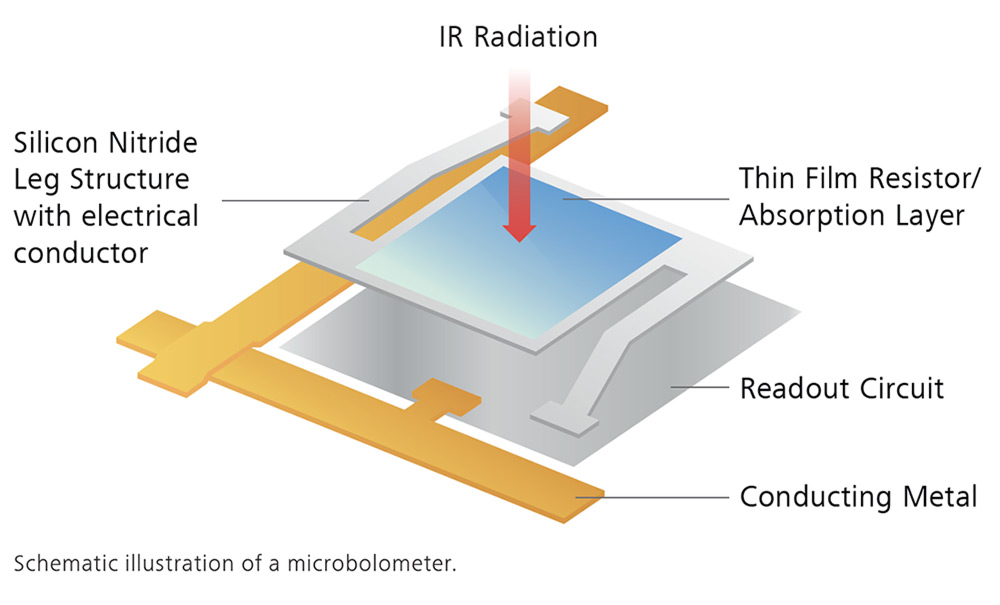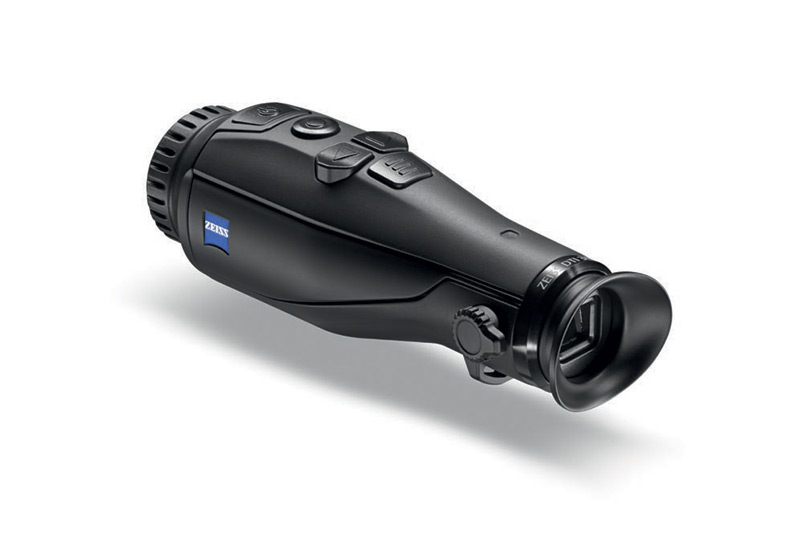- Call us: 01444 237070
- Contact Us
- Stores
- Sign In / Register
-
- Back
- Used Cameras
- Used Accessories
- Used Lenses
- Used Video
- Used Film Equipment
- Used Stock Alert
- Used Blank Test
- Sell or Part Exchange
- Used Clearance
- Recently Added Used Equipment
- Park Picks
- All Used Black Friday Deals
- Faulty
- Trade-In
- Blog
- New in
- Call us
- Contact us
- Stores
- Sign in
- Categories
- Tips & Inspiration
- Reviews
- News
- Events
- Features
- Buying Guides
- Competitions
How A Thermal Imaging Camera Works
If you want to continue observing birds and other wildlife subjects as light levels dip beyond the capabilities of your binoculars or spotting scope, a thermal imaging camera could be the perfect solution. With the addition of two new models from optical legends ZEISS, we thought it would be useful to understand how a thermal imaging camera works.

Many photographers and content creators are drawn to nature observation, whether simply to escape their desk, or as a rewarding hobby spotting, photographing and observing birds and animals in the wild. But how do they work and which should you choose for yourself?
Discover everything you need to know in our guide in order to equip yourself with the best tools for observing nature during day or night.
Thermal imaging camera for wildlife observation
When using a thermal imaging camera for wildlife observation, birds and other animals can be located and identified without being disturbed by any light source, even in total darkness. This provides a unique insight into wildlife behaviour at night, which is otherwise virtually impossible.

Does a thermal camera actually work?
The short answer is yes. A good quality thermal camera will create a colour or monochrome digital image of a subject, even in complete darkness. They were originally designed for military applications and have become increasingly popular for wildlife observation at night. Where binoculars and spotting scopes are brilliant in daylight, a thermal imaging camera for wildlife allows you to continue observing your subject as light levels dip, even during the complete darkness of night.
What’s different about a thermal imaging camera?
Conventional digital cameras capture light within the visible range to human eyes, whereas thermal imaging cameras operate in the long-wave infrared range. This allows them to detect the thermal radiation emitted by a body regardless of available visible light, in daylight and during complete darkness, where the eye sees nothing.
A handheld thermal imaging camera is an optoelectronic device, which means it gathers and processes a particular type of light, which in this case is infrared energy from any heat source. The processor takes infrared light and creates a coloured representation of the object’s temperature using an image processing algorithm, based on the signals from individual pixels. This is similar to the way in which a regular digital camera processes visible light that hits the camera sensor in order to create an image.

What technology is used?
Much like an all-in-one compact camera, you’ll find a lens, shutter, image processor and eyepiece inside a thermal imaging camera. You also have control over the digital image, with an adjustable colour display to choose modes including White Hot, Black Hot, Red Hot and Rainbow images, according to your subject.
Camera shutter
A shutter can be used to control the amount of light (radiation) passing through the lens, in exactly the same way as a conventional camera. The shutter will interrupt infrared radiation striking the detector at regular intervals, in order to recalibrate itself periodically, which makes a subtle clicking sound.

Thermal imaging sensors
The sensor inside a thermal imaging camera is known as a microbolometer, which mainly consists of amorphous silicon (ASI) or vanadium oxide (VOx). IR radiation hits the film resistor / absorption layer on the sensor surface and transmits through to the readout circuit.
Image processing
The sensor signal is digitised, after which a complex image processing algorithm optimises the signal. This algorithm plays a significant role in the quality of the digital image, how well details can be recognised during observation and the overall enjoyment you’ll experience.
What type of lens is used in the DTI 3 range?
Lenses are made of germanium, an element which transmits light in the required wavelength range. Germanium is extremely hard and is therefore always used when particularly robust and resistant optics are required.
Is exposure automatic or manual?
The camera is equipped with an auto exposure system, which adjusts for ambient conditions, changing the image brightness and contrast automatically for you. In the case of ZEISS DTI 3 cameras, auto exposure adjustment is accurate even in foggy or humid conditions, which often occurs at twilight or nighttime.

ZEISS thermal imaging cameras
Although perhaps best known for ZEISS lenses, the German company has over 100 years of experience designing all sorts of optics, including ZEISS Binoculars and spotting scopes. In 2023 ZEISS updated their range of DTI 3 Thermal Imaging Cameras for nature observation, with the ZEISS DTI 3/25 Gen 2 Thermal Imaging Camera and ZEISS DTI 3/35 Gen 2 Thermal Imaging Camera.
These improve on the original 2021 model image quality, with hardware and software updates reinforcing these as the go-to thermal cameras for wildlife observation.
Both of these allow you to view and share thermal imaging photos and videos, which can be recorded and transmitted via your smartphone. A digital image of a subject can be captured in daylight or complete darkness, with the range being the primary difference between the two.

How far does a thermal imaging camera work?
The DTI 3/35 Gen 2 offers 1,302m range, whereas the DTI 3/25 gen 2 has an 1300m range. This ensures you can enjoy observing different types of wildlife from a safe distance, without disturbing your subject. In the case of ZEISS DTI 3 models, you can magnify smoothly throughout the range with a fine, gradual zoom adjustment.
Checking Out the Zeiss DTI Range - Video review and interview with ZEISS
Zeiss DTI 3/35 & DTI 3/25 Video Review | Thermal Imaging Monocular (original 2021 Generation)
We hope this guide helps to explain the technology behind this innovative technology and how you can use it to enjoy viewing nature beyond sunset.
Choose between the ZEISS DTI 3/25 Gen 2 Thermal Imaging Camera or the ZEISS DTI 3/35 Gen 2 Thermal Imaging Camera from our range of ZEISS spotting scopes and start your wildlife observations today.
Share this post:
By Nick Dautlich on 11/03/2024
Nick Dautlich
Senior Content Writer and Product Reviewer
Nick Dautlich is the Senior Content Writer and Product Reviewer at Park Cameras, with over 15 years of photography experience. A Sony Imaging Professional and expert reviewer, Nick has worked with major brands such as Canon, Sony and Nikon. His work is also featured on Vanguard World UK’s website, Capture Landscapes, and Shutter Evolve. Nick’s photography includes National Trust projects and magazine covers and he is passionate about landscapes and storytelling. Nick also enjoys hiking and teaching his children about nature. Learn more on his profile page.

Trade in your old equipment
Fast and easy trade in service ensures your old gear is collected efficiently and you are paid quickly! It's very simple to trade in your unwanted photography gear. Just head over to our dedicated Sell or Part Exchange page, fill out the details, and we'll get back to you with an offer for your old gear. Take the cash, or put it towards the cost of your new gear. It's up to you! Find out more
sign up to the newsletter
Keep up to date on the latest photography news, events and offers. Sign up now